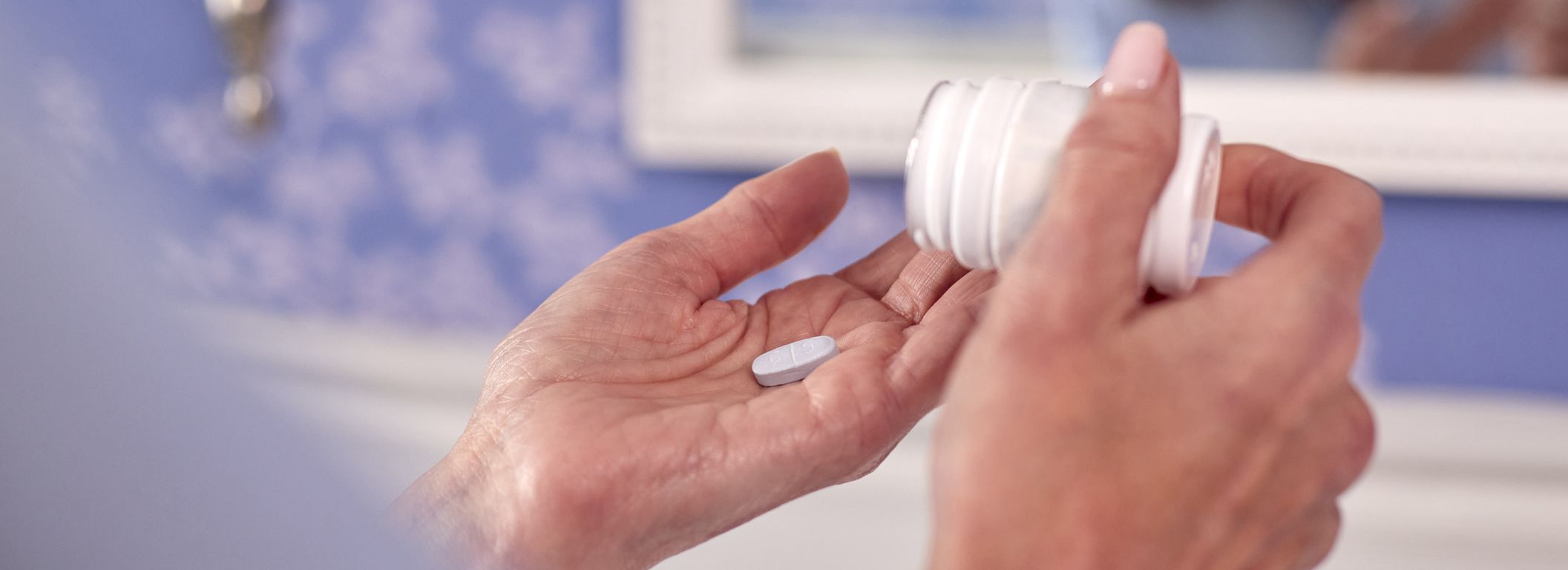
Natural hormones include estrone (E1), estradiol (E2), progesterone, testosterone, dehydroepiandrosterone (DHEA), and pregnenolone. Our compounding specialists work together with patients and prescribers to provide customized hormone therapy that provides the needed hormones in the most appropriate strength and dosage form to meet each woman's specific needs.
Take control of your mind and body
Structural differences exist between human, and synthetic and animal hormones. In order for a replacement hormone to fully replicate the function of hormones which were originally naturally produced and present in the human body, the chemical structure must exactly match the original. There are significant differences between hormones that are natural to humans and synthetic or horse preparations. Side chains can be added to a naturally-occurring hormone to create a synthetic drug that can be patented by a manufacturer. A patented drug can be profitable to mass produce, and therefore a drug company can afford to fund research as to the medication's use and effectiveness. However, naturally-occurring substances can not be patented, so scientific studies are less numerous on natural hormones, because medical research is usually funded by drug companies.
- Hormone replacement therapy should be initiated carefully after a woman's medical and family history has been reviewed.
- Close monitoring and medication adjustments are essential.
ANDROGENS
The Integrity of Skin, Muscle and Bone
Androgens are hormones that are important to the integrity of skin, muscle, and bone in both males and females, and have an important role in maintaining libido. Declines in serum testosterone are associated with hysterectomy, menopause, and age-related gender-independent decreases in DHEA and DHEA-sulfate. DHEA (dehydroepiandrosterone) is an androgen precursor from which the body can derive testosterone. After menopause, a woman's ovaries continue to produce androgens; however, the majority of the androgens produced in the female body, even before menopause, come from peripheral conversion of DHEA. As the body ages, production of DHEA declines so that by the time a woman goes through menopause, the production of DHEA is often inadequate. Additionally, ERT may cause relative ovarian and adrenal androgen deficiency, creating a rationale for concurrent physiologic androgen replacement. Recently, attention has turned to the addition of the androgens to a woman's HRT regimen in order to alleviate recalcitrant menopausal symptoms and further protect against osteoporosis, loss of immune function, obesity, and diabetes.
Androgens, such as testosterone and DHEA:
- enhance libido.
- enhance bone building (increase calcium retention).
- provide cardiovascular protection (lower cholesterol).
- improve energy level and mental alertness.
PROGESTERONE
Take Back Control
Progesterone is a term that is incorrectly used interchangeably to describe both progesterone which is "chemically identical" to what the body naturally produces, and synthetic derivatives. Synthetic progestins are analogues of progesterone, and have been developed because they are patentable, more potent, and have a longer duration. Medroxyprogesterone acetate, the most commonly used synthetic progestin, was shown in a large study to cause significant lowering of HDL "good" cholesterol, thereby decreasing the cardioprotective benefit of estrogen therapy. Side effects are a frequent cause for discontinuation of HRT. Only about 20% of women who start synthetic HRT remain on it two years later.
The benefits of progesterone are not limited to prevention of endometrial cancer in women who are receiving estrogen replacement. Progesterone therapy is not only needed by women who have an "intact uterus", but is also valuable for women who have had a hysterectomy. Vasomotor flushing is the most bothersome complaint of menopause, and is the most common reason women seek HRT and remain compliant. For over 40 years, estrogens have been the mainstay of treatment of hot flashes, but progesterone may be effective as well.
- is commonly prescribed for perimenopausal women to counteract "estrogen dominance" which occurs when a woman produces smaller amounts of progesterone than normal relative to estrogen levels.
- alone, or combined with estrogen, may improve Bone Mineral Density.
- minimizes the risk of endometrial cancer in women who are receiving estrogen.
- is preferred by women who had previously taken synthetic progestins.
ESTROGENS
Re-Establish a Normal Physiologic Balance
Estrogens actually refers to a group of related hormones, each with a unique profile of activity. Under normal circumstances, a woman's circulating estrogen levels fluctuate based on her menstrual cycle. For Hormone Replacement Therapy, these hormones are often prescribed in combination to re-establish a normal physiologic balance. The three main estrogens produced in female humans are:
- E1 (Estrone; 10-20% of circulating estrogens) is the primary estrogen produced after menopause.
- E2 (Estradiol; 10-30% of circulating estrogens) is the most potent and major secretory product of the ovary, and the predominant estrogen produced before menopause.
- E3 (60-80% of circulating estrogens)
